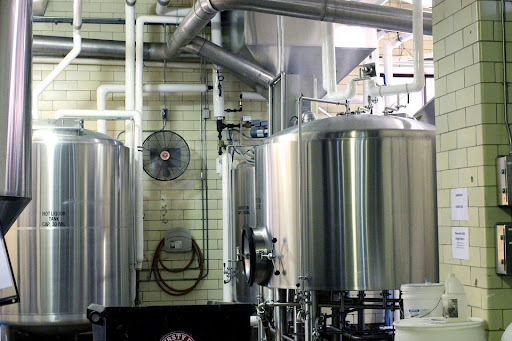
What Are Quality Brewtanks?
Sitting across from the bartender, sharing laughs and cheers as you watch tonight’s game or talk about the latest happenings, there’s no more universal companion than beer. Drinking is one of the world’s oldest pastimes for a reason, and a lot of that has to do with the drink itself.
Quality beer is more than just a beverage – it’s a whole process. Larger companies and brand names may be able to skimp out on effort and quality, but for those of us who truly love beer, we put our hearts and souls into it.
If you run a bar, or any place that sell homebrewed beer, you understand this on a fundamental level. The amount of work that goes into a good mug of beer is intense, and you should feel proud of your efforts when they taste this good. You shouldn’t get careless, though.
“A chef is only as good as their ingredients,” but a lot of people forget that tools are also a part of the intricate process of brewery. Making something people will enjoy, crafting a drink that tastes like “tradition” or “home”, it all relies on what you use and how you use it. For those who want to evoke those precious feelings in their craft, there’s a lot of history behind the intent.
Table of Content
History of Brewery
Believe it or not, beer may be as old as civilization itself. Evidence suggests that some of the first developing nations in the world brewed beer, and many records show that brewery has gone on for thousands of years.
Despite being separated by kilometers of land and sea, many civilization independently began brewing beer on their own. As with anything that has endured for so long, there are even mythological figures centered around beer, such as the Mesopotamian goddess of beer, Ninkasi. The poem honoring this goddess, of which can be studied here, is the oldest record of beer-brewing that exists today, including a recipe.
Beer in the olden days was not the smooth, bubbly drink it is now. Back then, refining processes barely existed, and so the drinks were more of a beer-tasting slop. Many civilizations even used straws to avoid drinking up the bitter solid remains. It is hard to imagine such an unappetizing sludge could become the popular drink we know today, but even ancient pharaohs partook of it, so clearly it was meant to be successful.
Prior to more modern times, beer and ale were mostly homebrewed. Individuals needed to make their own drink, as it was impossible to preserve and spoiled quickly. It wasn’t until hops were added to beer that the drinks lasted long enough to be kegged and stored for later consumption.
Eventually, the era came where beer was commonplace. Old run-down taverns were a common fixture in the Middle Ages, and the drink was so prevalent that the myth that beer was a more common drink than water emerged. It was so prevalent that discussions about what truly constituted “beer” started, arguments blooming between the old-timey purists and the then emerging hops enjoyers.
By the modern era, beer was one of the world’s most prevalent beverages. In Europe, it suffered in popularity behind wine, but it was still a staple fixture in many diets, making it a uniquely universal experience. This is in large part thanks to how common grains and cereals were, and so many peoples began to make their own beer.
Today, beer is one of the largest-selling drinks in the world. Some may argue that this is a bad thing. Alcohol has an inhibitive effect on the mind, and its effects can cause long-term damage to the body. Of course, drinking responsibly is a good way to prevent any negatives.
Brewery Today
Not much has changed since ye olden days, and yet a lot has at the same time. Brewing is an intricate process that involves precise measurements and hardware, and it’s become so popular that whole warehouses are dedicated simply to the crafting of beer. Many bars sell their own homebrew, and mass-produced beers line the shelves in cans or bottles.
Nowadays, brewery is a multi-step procedure. It involves a lot of tools, and most of them are rather large. Tanks, tubs, tuns, tubes, and kettles are all used for specific purposes. Those warehouses are not simply empty spaces; they’re filled to the brim with everything it takes to make a good mug of beer.
Factory-produced beer lacks a lot of the heart of the stuff created in your own warehouse, but it’s still beer, designed with taste and cost in mind. Beer is supposed to be cheap, and these factories prove it, but it can also be an artform when produced with the right ingredients and tools.
These tools require care and maintenance, as much as any auto-repair shop or textile factory would. Quality is key, and appliances like ABS Commercial brewing equipment are capable of doing a lot with a little. With how diverse the field of brewery is, you should keep an eye out for places that provide the tools you need to make a good brew.
Conclusion
Beer is ostensibly part of human history. It’s not just a drink or a movement, nor is it simply a “beverage”. Much like the bread it comes from, it’s a part of our world’s culture, and is a bridging point between otherwise disparate societies. It’s been invented and expanded upon in so many places at once that the strict “origin” of beer doesn’t exist, but the current state of it is a global unifier all the same.
Whether it’s large chain bars or small hole-in-the-wall places, Tokyo bars or Irish pubs, there’s always a place for drinking and merrymaking. The history behind beer is deep and rich, full of nuance that can’t be covered in such a short article. But that history is still growing today, so you should be proud that you’re a part of it.


